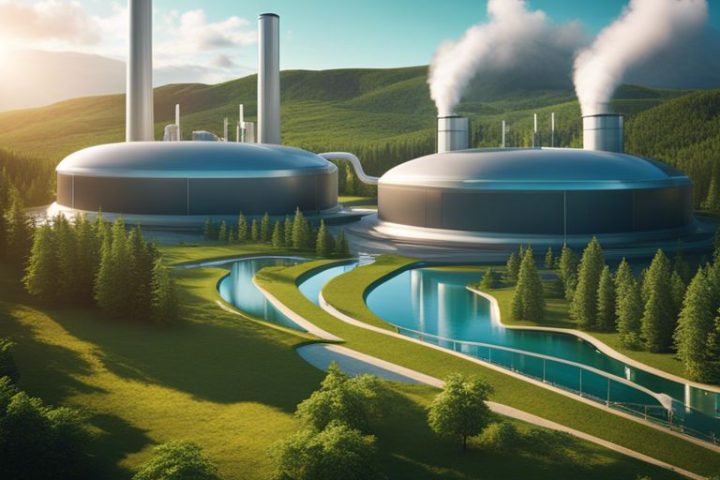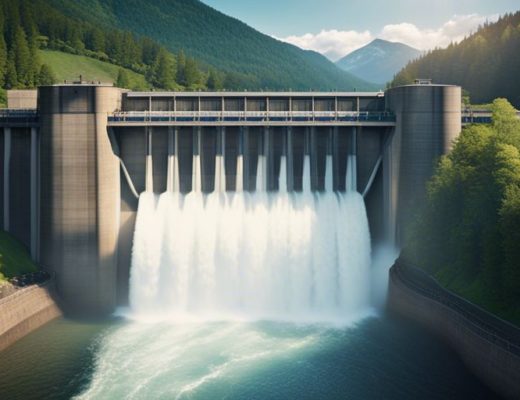Most environmentally conscious individuals like yourself are turning to geothermal energy as a reliable and sustainable power source. Discover the reasons why this renewable energy option is gaining popularity and how it’s paving the way for a greener future in this detailed exploration of the benefits of geothermal energy.
History of Geothermal Energy
A sustainable power source that has been utilized for centuries, geothermal energy has a rich history that showcases its potential as an eco-friendly energy alternative. On this journey through time, you will discover the early exploration and development of geothermal energy and the significant milestones and breakthroughs that have propelled its rise as a sustainable power source.
Early Exploration and Development
On the path to harnessing geothermal energy, early civilizations recognized the power of natural hot springs for bathing and heating. The utilization of geothermal energy dates back to ancient times, with civilizations such as the Romans and the Chinese using hot springs for bathing and space heating. Over time, this primitive use of geothermal energy evolved into more sophisticated geothermal systems for various applications.
Milestones and Breakthroughs
With advancements in technology and a growing awareness of the potential of geothermal energy, significant milestones and breakthroughs have shaped the development of this renewable energy source. For instance, the first geothermal district heating system was established in the late 19th century in Italy, marking a crucial advancement in the utilization of geothermal energy for heating purposes. This breakthrough paved the way for the widespread adoption of geothermal energy systems for both residential and commercial heating applications.
How Geothermal Energy Works
Heat from the Earth’s Core
Any moment now, you’re about to examine into the fascinating world of geothermal energy and how it harnesses the heat from the Earth’s core. Deep beneath the surface, the Earth’s core heats up rocks to temperatures exceeding 4,000 degrees Celsius. This intense heat causes the rocks to melt and form magma, creating a vast reservoir of thermal energy.
Conversion to Electricity
Any interest you may have in geothermal energy will lead you to the next step: converting this abundant heat into electricity. **Geothermal power plants** achieve this through various methods, with the most common being the use of **steam**. **Water** pumped into the Earth’s hot zones turns into steam, which then drives turbines connected to generators, producing electricity.
Energy generated from geothermal sources is **renewable**, **clean**, and **sustainable**. Unlike fossil fuels, geothermal energy produces **little to no greenhouse gases**, making it an excellent alternative for **environmentally-conscious** individuals. Embracing geothermal power can significantly reduce **reliance on non-renewable energy sources** and **contribute to a greener future** for generations to come.
Benefits of Geothermal Energy
Renewable and Sustainable
There’s something incredibly reassuring about knowing that the energy you are harnessing is renewable and sustainable. Geothermal energy is derived from the heat within the Earth itself, which means it is an inexhaustible resource. By tapping into this natural heat, you can power your home or business with the knowledge that you are not depleting a valuable energy source.
Low Carbon Emissions
On top of being renewable, geothermal energy is also known for its low carbon emissions. When compared to traditional fossil fuels like coal or natural gas, geothermal power plants release significantly fewer greenhouse gases into the atmosphere. This means that by choosing geothermal energy, you are making a positive impact on the environment by reducing your carbon footprint.
It’s worth noting that geothermal power plants produce virtually no air pollutants, helping to improve air quality and reduce the harmful effects of traditional energy production on human health and the environment.
Reliability and Consistency
Energy derived from geothermal sources is known for its reliability and consistency. Unlike other renewable energy sources like wind or solar power, geothermal energy is not dependent on weather conditions. This means that you can count on a steady and predictable source of power, making it an ideal choice for meeting your energy needs consistently throughout the year.
With geothermal energy, you don’t have to worry about fluctuations in energy production due to clouds or calm days. This dependable source of power can provide you with peace of mind knowing that your energy supply is stable and reliable regardless of external factors.
Challenges and Limitations
Location-Specific Constraints
Your location can greatly impact the feasibility of geothermal energy as a power source. Geothermal reservoirs are not evenly distributed around the world, and certain regions may lack the necessary heat sources for efficient geothermal power production. Additionally, the depth and accessibility of these reservoirs can vary, posing challenges in harnessing geothermal energy effectively.
High Upfront Costs
One of the major challenges in implementing geothermal energy projects is the high upfront costs associated with drilling and infrastructure development. Building geothermal power plants requires significant investment in exploration, drilling, and plant construction. These costs can be a barrier for many regions, hindering the widespread adoption of geothermal energy.
High upfront costs can make geothermal energy projects financially risky, especially for investors who may opt for more conventional energy sources with lower initial investment requirements. However, it’s important to note that once operational, geothermal power plants have low operating costs compared to fossil fuel-based power plants, making them more cost-effective in the long run.
Technical Challenges
An additional technical challenge in geothermal energy production is the potential for reservoir depletion or cooling over time. As extraction continues, the heat stored in the reservoir can diminish, impacting the efficiency and sustainability of the geothermal power plant. Monitoring and managing reservoirs to ensure long-term productivity and environmental sustainability is crucial in overcoming this challenge.
Current Applications and Projects
Power Plants and Electricity Generation
Unlike other renewable energy sources like solar and wind, geothermal energy is available 24/7, making it a reliable source of power generation. One of the main applications of geothermal energy is through power plants that harness the heat from the Earth’s core to produce electricity. These plants use steam or hot water from underground reservoirs to spin turbines connected to generators, producing clean electricity without greenhouse gas emissions.
Direct Use and Heating Systems
Projects
One of the most common applications of geothermal energy is direct heating systems, where hot water from underground is pumped directly into buildings for heating purposes. This technology is widely used in countries like Iceland, where a significant portion of the population relies on geothermal energy for heating their homes, schools, and other buildings.
Geothermal energy can also be used for industrial processes, greenhouse heating, and even spa facilities. The versatility and reliability of geothermal energy make it a valuable resource for both residential and commercial heating needs.
Enhanced Geothermal Systems
Applications
To further expand the use of geothermal energy, enhanced geothermal systems are being developed. These systems involve creating artificial reservoirs by fracturing hot rock underground and circulating water through them to extract heat. This technology has the potential to unlock geothermal energy resources in areas where traditional methods are not feasible, contributing to the growth of geothermal power generation.
Geothermal energy offers a promising solution to our energy needs while reducing our dependence on fossil fuels. Its continuous availability and minimal environmental impact make it a valuable part of the sustainable energy mix for the future. By investing in geothermal projects and applications, we can harness the power of the Earth to create a cleaner and more sustainable world for your generation and beyond.
Future Prospects and Potential
Emerging Technologies and Innovations
Future advancements in geothermal energy technology hold great promise for the industry. From enhanced geothermal systems (EGS) to geothermal heat pumps, innovative solutions are being developed to improve the efficiency and cost-effectiveness of geothermal power generation. These technologies aim to tap into deeper and hotter geothermal reservoirs, expanding the potential for geothermal energy production.
Global Expansion and Market Growth
Innovations in geothermal energy have fueled the growth of the market on a global scale. Countries around the world are recognizing the benefits of geothermal energy as a clean and sustainable power source, leading to increased investment and expansion of geothermal projects. As the industry continues to mature, the global geothermal market is projected to experience significant growth in the coming years.
With a growing focus on renewable energy sources and the urgent need to reduce greenhouse gas emissions, the geothermal energy sector is poised for rapid expansion. Prospects for the industry are bright, as governments and regulators increasingly support policies that promote the development of geothermal energy projects.
Policy and Regulatory Support
Technologies such as feed-in tariffs, tax incentives, and renewable energy targets are incentivizing investments in geothermal projects and creating a favorable environment for the industry to thrive. Strong regulatory frameworks are crucial to ensure sustainable development and utilization of geothermal resources, paving the way for a cleaner energy future.
Conclusion
With this in mind, it is clear that geothermal energy is emerging as a sustainable power source that holds great promise for a greener future. By harnessing the Earth’s natural heat, we can generate clean electricity while reducing our reliance on fossil fuels and lowering our carbon emissions. As we continue to innovate and invest in geothermal technology, we can create a more sustainable energy landscape that benefits both the environment and our communities.
By embracing geothermal energy, you are not only supporting a cleaner, renewable power source but also contributing to the fight against climate change. This shift towards a more sustainable energy mix is necessary for building a brighter and more environmentally friendly future for generations to come. As we look towards a world powered by renewable energy sources, geothermal energy stands out as a reliable and efficient option that can play a significant role in our transition to a cleaner and more sustainable energy future.





